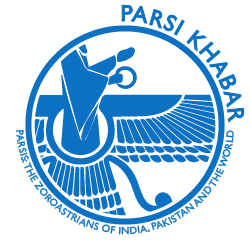City writer Murzban F Shroff in his third book, crafts a collection of stories that can be read in five minutes
It is difficult to imagine how the world can change in a minute. But on November 8, 2016, when news of demonetisation broke – through an unscheduled televised address – the world did change for many. In Fasttrack Fiction (Juggernaut Books), a three-part collection of digital shorts, Murzban Shroff capitalises on fast-paced narrative, where the worlds of his protagonists evolve in every sentence, in stories worded between 150 to 1,500 words.
Article by Dalreen Ramos | Mid-Day
Shroff’s first short story collection, Breathless in Bombay (2008), was shortlisted for the 2009 Commonwealth Writer’s Prize, but he soon found himself entangled in a web of litigation – accused of inciting communal disharmony. The first part of Fasttrack Fiction that released last month highlights the intersection between gender, politics, economics and geography, with the second and third scheduled to release next week and month respectively.
Edited excerpts from the interview.
What impact did the litigation cases have on you?
The litigation against Breathless in Bombay had a significant impact on my subsequent work. I thought: if I was going to be sued and harassed for a book as well-intentioned as Breathless, which had been recognised unanimously as a unifying piece of work, then I might as well say what I want to, and say it strongly, firmly, without inhibition or reserve. The worst thing that can happen to a writer is self-censorship, and I took care to see that I did not fall into that trap when working on my novel, Waiting for Jonathan Koshy. Once I was clear about this, I could develop Koshy as a post-modern satire which examines India in the light of growing intolerance and anarchy. I could answer that crucial question which I was assailed by: How do you understand India? Can you really do so?
The city is always central to your works. Where does Fasttrack Fiction figure in that aspect?
I do confess to a territorial bias for Mumbai. And while Fasttrack Fiction is not specifically Mumbai, it views issues – psychological or situational – through the lens of a Mumbaikar, which is to say a more varied and multidimensional lens. And, of course, there are themes that are distinctly Mumbai: land-grabbing, flat-grabbing, housing society woes, and that wonderful Mumbai bonhomie, which exists still, in strange and wondrous ways.
What inspired you to venture into digital shorts?
I take my walks on Marine Drive and am invariably surprised to see how couples are often sitting together but each person is busy on his/her cell phone. That little screen occupies the full being of their consciousness and there is no cognisance of life around. Likewise on local trains. Of the 16 people in opposing rows, at least nine persons are engrossed with their cell phones. Given this kind of obsession, I could not afford to ignore this platform, the digital platform, anymore. It took me around a year to create 25 stories, of which nine are available in part one.
Was your process any different when compared to your books?
This being a new medium, the writing process I set for myself was totally open-ended. The story could be anything – it could be an exposé, a psychological insight, a startling observation, a kindred experience, an unprecedented scam. These are the kinds of stories you’d tell at a party – for entertainment or for impact! I freed myself from the conventional boundaries of story-telling and explored different entry points, different formats. I could interweave details of fiction and non-fiction, take ordinary people and place them in extraordinary circumstances, to deliver extraordinary insights into human nature. The experience of writing Fasttrack Fiction was both, pleasurable and liberating.
How does one write for the cell phone reader?
With the cell phone reader, you are competing for his/her attention in a more urgent way. This is not like a bookstore or a bookshelf, where you have the luxury of choice. Here, there are other forms of news and media screaming for the reader’s attention. So your themes have to be more urgent, more compelling, and your revelations or epiphanies that much more startling. The cell phone reader is certainly short on time and short on patience, and you had better deliver, to his/her satisfaction, quickly.
Was it a challenge to condense the narrative of each story?
I think each story chose its own trajectory. For instance, one of the most powerful stories in the book – about a seasoned conman and his modus operandi – is no more than 150 words. Anything more would have reduced the shock value. In the longer stories, where, say, a sequence of events had to unfold, I would consciously work towards a taut narrative pace and a compact elegance. When literature is the end goal, then editing does become a manic obsessive process. It works on the assumption that you have to respect your reader’s time.


